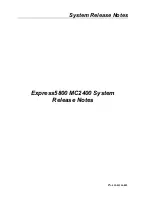
CAUTION: To prevent thermal failure or component damage, do not move the heatsink once the bottom of its
base plate touches the top of the processor. Excessive heatsink movement can cause the thermal grease to
smear and become uneven. Voids in the compound can adversely impact the transfer of heat away from the
processor.
CAUTION: Heatsink screws must be tightened and loosened in alternating sequence. Do not overtighten the
screws as this might damage the system board or the processor socket.
a. Position the heatsink on top of the processor, ensuring that it is properly seated before securing the screws.
b. Use a T-20 Torx screwdriver to tighten the captive screws in the sequence specified on the heatsink label.
When using a torque wrench to tighten the screws, apply a torque of 1.58 N-m (14 lbf-in).
12. Install the air baffle.
13. Install the access panel.
14. Install the server into rack.
15. Connect each power cord to the server.
16. Connect each power cord to the power source.
17. Power up the server.
Removing and replacing a processor
Hewlett Packard Enterprise recommends
identifying the processor and socket components before performing this
procedure.
Prerequisites
Before you perform this procedure, make sure that you have the following items available:
Removal and replacement procedures
83
Summary of Contents for ProLiant DL385 Gen10
Page 30: ...30 Customer self repair...
Page 31: ...Customer self repair 31...
Page 32: ...32 Customer self repair...
Page 129: ...8LFF front panel 12LFF front panel Midplane box LFF only Component identification 129...
Page 142: ...Boxes 2 and 3 to SAS Expander All boxes to SAS Expander 142 Cabling...
Page 143: ...Cable routing Midplane 4LFF SAS SATA drive option Cabling 143...
Page 145: ...Cable routing Rear 3LFF SAS SATA drive option for system board Cabling 145...
Page 147: ...Cable routing Front 2SFF NVMe side by side drive options Cabling 147...
Page 149: ...Cable routing Front 8SFF NVMe drive options Box 1 Box 2 Cabling 149...
Page 150: ...Box 3 150 Cabling...
















































